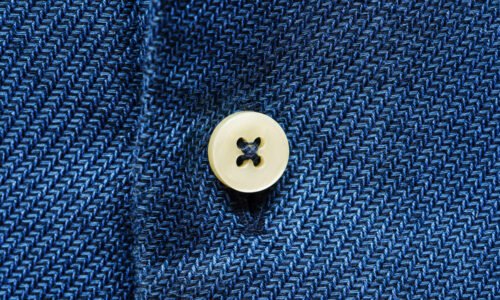Introduction to Polyester Button Making Machines
Polyester button making machines are a specialized category of industrial machinery designed to streamline the production of durable and aesthetically pleasing buttons. These machines have carved out a significant niche in the textile and fashion industries due to their efficiency, versatility, and the high-quality outputs they deliver. Unlike traditional button-making methods, which typically involve manual processes and limited capabilities, the latest button manufacturing machines employ advanced technology to automate and enhance the entire production cycle.
The origin of polyester button making can be traced back to the mid-20th century, a period marked by rapid advancements in synthetic materials. Polyester, known for its durability and flexibility, quickly became a preferred material for button manufacturing. The adoption of dedicated machinery for polyester button production enabled manufacturers to meet increasing demand while maintaining consistent quality and design precision.
A key feature of modern polyester button making machines is their integration with sheet casting drums for button making. These drums play a crucial role in ensuring uniform material distribution and precise thickness control. The high efficiency of sheet casting drums significantly reduces wastage, contributing to cost-effective production processes. Additionally, the ability to combine various polyester blends and colors directly within the machine allows for a wide range of button styles, including transparent, translucent, and opaque buttons.
Another notable aspect is the versatility offered by polyester button making machines. From basic shirt buttons to elaborate decorative pieces used in high fashion, these machines are capable of producing an extensive array of button types. This versatility is further enhanced by the inclusion of programmable settings and interchangeable molds, which facilitate quick transitions between different production runs.
The significance of polyester button making machines in modern manufacturing cannot be overstated. They not only boost production efficiency but also ensure a standard of quality that manual processes struggle to achieve. As the demand for innovative and reliable products continues to rise, these machines stand at the forefront, enabling manufacturers to keep pace with industry requirements while promoting sustainable practices through optimized material usage and reduced waste.
Types of Polyester Button Making Machines
Polyester button making machines come in various types, each designed to cater to different production needs and operational requirements. These machines can be broadly categorized based on their features, sizes, automation levels, and specific functionalities. Understanding the nuances of each type can significantly impact the efficiency, cost-effectiveness, and quality of the buttons produced.
Firstly, manual polyester button making machines are the most basic and affordable option. Presenting a straightforward mechanism, they require significant human intervention to operate. While the initial investment is low, the labor-intensive nature and slower output might not be suitable for high-volume production. However, these machines are ideal for small-scale operations or custom button makers who prioritise precision and control over speed.
Semi-automatic machines offer a balance between manual and fully automated operations. These machines reduce human effort by automating certain processes while still requiring manual inputs and supervision. Semi-automatic machines typically improve production speed and consistency compared to manual machines. They are often equipped with sheet casting drums for button making, ensuring uniformity in every batch. This type of machine is suitable for medium-scale businesses looking to enhance their productivity without a significant increase in operating costs.
Fully automatic polyester button making machines are the pinnacle of efficiency and productivity. These machines handle the entire button-making process, from material feeding to final output, with minimal human intervention. They are equipped with the latest button manufacturing technologies, ensuring high-speed production and consistent quality. Although the initial investment is higher, the long-term benefits include reduced labor costs and the ability to meet large-scale production demands. These machines are ideal for large manufacturing units where high output and product uniformity are crucial.
In addition to automation levels, specific functionalities differentiate these machines. For instance, some machines are designed to handle intricate designs and detailed finishes, while others focus on bulk production of standard buttons. The choice of a machine should align with the business’s production goals, whether it’s focusing on high-quality craftsmanship or maximizing output volume.
Given the various types of polyester button making machines available, selecting the right one depends on specific operational needs, budget constraints, and desired production capacities. Each type has its advantages and disadvantages, and understanding these will help make an informed decision, ultimately affecting the efficiency, cost-effectiveness, and quality of the buttons produced.
Process of Making Polyester Buttons
The creation of polyester buttons is a meticulous process, requiring precision and quality control at every stage. The journey begins with the preparation of raw materials, specifically polyester resin. The resin is mixed with various additives to enhance its durability, color, and overall finish, ensuring it meets the required specifications.
Once the resin mixture is ready, it is fed into the latest button manufacturing machines. These machines are equipped with sophisticated features that ensure a seamless transformation of raw materials into button blanks. The mixture is poured onto sheet casting drums for button making, where it is cast into flat sheets. These sheets then undergo a cooling process to solidify the polyester, creating a uniform and consistent base for the buttons.
After the sheets have cooled, they’re transferred to cutting stations within the polyester button making machines. Here, high-precision tools are utilized to cut the sheets into individual button shapes. This step is crucial, as any deviation in size or shape can impact the functionality and aesthetic quality of the buttons. Advanced sensors and automated controls within the machines facilitate consistent cuts, reducing errors and waste.
The button blanks then proceed to the polishing and finishing stages. Dedicated polishing units within the machines smooth out the edges and surfaces, ensuring the buttons are free from any imperfections. At this stage, various decorative techniques such as engraving or painting can be applied to enhance the button’s visual appeal.
Quality control is integral throughout the entire process. Automated inspection systems check each button for defects, ensuring only those that meet the highest standards proceed to packaging. Manufacturers face challenges such as resin impurities, temperature fluctuations, and machine malfunctions, which can disrupt the production process. Regular maintenance of the polyester button making machines and strict adherence to operational protocols are essential for mitigating these issues.
The comprehensive capabilities of modern polyester button making machines play an indispensable role in the production line. By integrating advanced technology and automated systems, these machines enable manufacturers to produce high-quality polyester buttons with remarkable efficiency and precision.
Maintenance and Optimization of Polyester Button Making Machines
Ensuring that polyester button making machines are well-maintained is paramount for sustained performance and extended operational life. Establishing a robust maintenance schedule is the first step toward achieving this. Regular checks on critical components like sheet casting drums for button making and operational circuits can help in early identification of wear and tear, potentially saving significant repair costs down the line. It’s advisable to follow user manuals and manufacturer guidelines for periodic maintenance routines.
Lubrication is another critical aspect. Keeping moving parts, including gears and bearings, adequately lubricated can prevent frictional damage and ensure smooth operation. Additionally, the calibration of machine settings should be routinely checked to maintain accuracy in button dimensions and quality. High-quality materials and components should always be used in repairs and replacements to avoid compromising the machine’s performance.
Common troubleshooting techniques can often quickly resolve issues that might otherwise cause significant downtime. For instance, addressing common problems such as buttons sticking in molds or irregular shapes can frequently be tied to misalignment or dirt accumulation in key areas of the machine. Regular cleaning and alignment checks can preempt these issues effectively.
Preventive maintenance also plays a crucial role in machine optimization. By regularly inspecting the latest button manufacturing machines for any signs of potential failure, you can avoid unexpected breakdowns. This approach not only reduces downtime but also enhances the throughput and speed of button production. Optimization can also be achieved by updating software and firmware to include the latest advancements in manufacturing technologies, thereby improving machine efficiency.
Overall, meticulous maintenance and thoughtful optimization of polyester button making machines can significantly enhance production quality and speed. Manufacturers should adopt these best practices to ensure their machinery remains durable and efficient, thus maximizing the return on investment.


